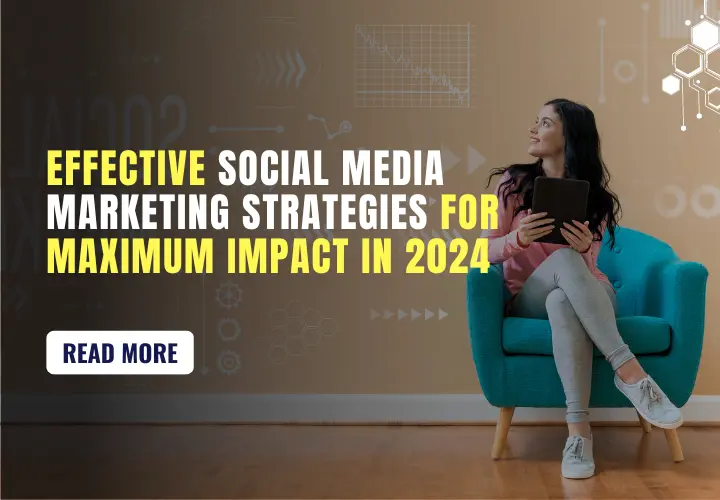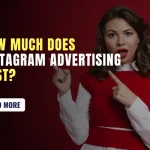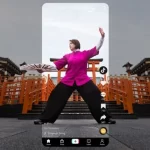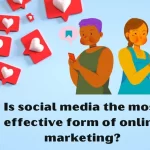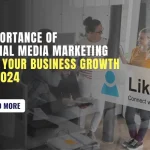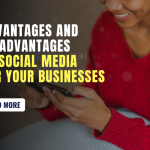Effective Social Media Marketing Strategies for Maximum Impact in 2024
Recently updated: March 29th, 2024
The social media market continues to evolve rapidly. What works today might not work tomorrow, so brands must stay attentive and adapt strategies to maximize impact across social channels.
Short-form video platforms like TikTok and YouTube Shorts have become a key focus for marketers. Visually exciting content will be crucial for capturing short attention spans. The authenticity afforded by live streaming presents engaging brand opportunities to build credibility and community.
Social media, used by 4.62 billion people, represents just over half of the global population.
While new platforms provide promise, strategies like influencer marketing remain integral to tapping into engaged networks. Ultimately, success requires understanding core social media marketing strategies like community building and social listening.
This introduction outlines crucial strategies for the shifting social media market that sharpen the marketer’s needs.
Top Effective Social Media Marketing Strategies
Understanding the current state of social media is crucial for developing successful strategies. This section explains the top effective social media marketing strategies that provide a foundation for crafting impactful campaigns.
1. Visual Storytelling/Video Content
Video is the king of social media engagement, and in a social media world where consumers have endless content options for their attention, video has emerged as the format that stands out differently.
With higher engagement levels compared to images or text-based posts across platforms like Facebook and Instagram, video content should be central to any 2024 marketing strategy.
Younger people are especially adept at processing short, attention-grabbing videos, making concise formats ideal for reaching everyone. Platforms like TikTok and YouTube Shorts cater to shorter attention spans, with brands finding viral success through fun, creative videos that tap into current trends.
The low barriers to entry for creating videos through smartphones make consistent video content production viable for businesses of any size.
Benefits of video content:
- Video content is endlessly customizable to match brand needs and campaign goals while conveying more information than static visual formats.
- Videos can range from quick tips or behind-the-scenes peeks to animated explainers and customer testimonials that provide value and engagement.
- Videos also feature prominently in algorithmic feeds, earning brands more exposure.
2. Influencer Marketing
The power of influencer marketing lies in tapping into trusted networks. Influencer marketing has emerged as an effective way for brands to get their messages across to the right audiences.
Influencers, whether nano, micro, or macro, have engaged communities based on trust and authenticity. Strategic brand partnerships allow tapping into these networks.
The key is identifying influencers whose content and values align closely with the brand’s positioning. Micro-influencers often focus on niche topics, while macro-influencers have a wider, more mainstream appeal.
Visual platforms like Instagram and TikTok are still at the forefront of influencer marketing, however, YouTube and other platforms also continue to grow. Tactics like tapping into user-generated content (UGC) via hashtags and encouraging customers to create on-brand content expand reach exponentially.
Benefits of influencer marketing:
- Influencers sharing user photos and videos are proven to boost engagement and sales as followers connect with “real people.”.
- Policies around transparency of paid partnerships also build trust in recommendations.
- For brands struggling to create unique and relevant social content, influencers plug distribution gaps through consistent content creation.
3. Live Video
Live video represents an increasingly popular and effective tactic for brands looking to boost engagement across social media. Platforms like Facebook Live, Instagram Live, and LinkedIn Live facilitate direct, real-time broadcasting to audiences.
The raw, unscripted nature of live streaming builds credibility and trust for brands with consumers. Short teaser announcements can draw viewers’ attention to planned live streams focused on current brand highlights like new product launches, behind-the-scenes tours, or insider interviews.
The interactive format also allows and encourages live comments or audience questions to facilitate two-way conversations at scale. With video dominating online consumption, live streaming offers another avenue to showcase brand personality.
Benefits of live video:
- Visual presentation inspires and holds attention better than static images.
- Viewers spend more time engaging with video, with up to 95% more retention than text.
- Live video gives greater brand awareness and recall.
Brands embracing real-time social video can infuse authenticity into messaging, improve engagement, build community, and increase visibility. As consumers continually shift towards video-centric consumption, a strong live video streaming presence is becoming more and more essential for social dominance.
4. Hashtag Campaigns
Hashtags are one of the best techniques for expanding branded reach and awareness on highly visual social platforms. The strategic creation of a memorable, branded hashtag campaign encourages audiences to participate in a shared experience centred around user-generated content.
Successful hashtags build buzz by tapping into current conversations and trends. A branded hashtag challenge, contest, or call for shared stories, photos, or videos uses user creativity and networks for exponential growth.
For example, brands might encourage users to post pictures showcasing products in their daily lives or create video reviews.
Offering prizes, discounts, or gated content drives further participation. With ideal hashtag promotions, followers are inspired to create branded assets that feel authentic and compelling, even to non-supporters.
Benefits of hashtag campaigns:
- Hashtags boost visibility beyond a brand’s existing follower count by aggregating UGC from all contributors into shared streams. This increases the volume of branded content as fans and creators alike participate.
- Hashtags to a brand’s photos or captions also help that content surface to broader interested audiences already following or searching for that hashtag.
- Branded hashtags use compounds, with each campaign adding to overall awareness. Tracking metrics around impressions, content contributions, and engagement reveals which tactics work best per platform.
5. Social Commerce Integration
Given social media’s role in the discovery and research process for today’s consumers, platforms have responded by facilitating seamless in-channel transactions.
Integrating convenient shopping capabilities allows brands to convert social followers into customers right from inspiration to final purchase completion.
For example, tagging products on Instagram or Facebook opens a thumbnail with pricing and a checkout button for nearly seamless transactions.
Showcasing goods in short videos, stories, or posts and enabling one-click purchases removes barriers when interest spikes. Social giant TikTok already allows shoppable live streams and is expanding e-commerce offerings to more regions after stellar initial results.
This embeds social platforms firmly into the sales system by capturing impulse buy moments. 41% of social channel users have made purchases directly through platform checkout capabilities.
Benefits of social commerce integration:
- Continued optimization around predictive recommendations and personalized promotions will further boost social commerce potential.
- Beyond sheer conversions, the data from social shopping provides invaluable consumer insights, from demographics to behaviors around product exploration vs. actual follow-through purchases.
- Platforms also assist with measurement by tracking visits to product pages, add-to-cart rates, and sales.
The convergence of entertainment and transactions on curated social feeds offers both convenience and insights. As social commerce expands globally over the coming years, investing early in video content, streamlined checkout flows, and cross-channel data analytics will pay dividends for leading brands.
6. Personalized Content Creation
Mass broadcast messaging is no longer sufficient on social media, where users expect to customize experiences. By using data analytics, brands can determine buyer personas and craft customized content accordingly. Personalized posts, engagement messaging, and special offers based on interests and behaviors boost relevance and relationships.
Platforms themselves surface posts predicted to match individuals’ preferences in feeds. However, brands can target key demographics with segmented videos, graphics, and captions conveying a customized look, feel, and highlights.
Quizzes, consultations, and live chat sessions also allow for delivering advice or offers matched to declared needs. Integrating user names into birthday or loyalty messages builds deeper connections. Even product suggestions from browsing or purchase history create goodwill via relevance.
Benefits of personalized content creation:
- With personalization, brands can efficiently allocate creative bandwidth to produce multiple variations of content adapted by location, age groups, and affinities rather than one-size-fits-all posts.
- In the long term, AI and machine learning will assist further with automated customization.
- Results show that 72% of consumers only engage with customized messaging. Open and click-through rates also confirm that personalized content outperforms.
7. Artificial Intelligence (AI) and Automation
Modern marketers aiming to maximize social media ROI should look to AI and automation to unlock efficiency at scale. Platforms themselves already utilize advanced algorithms and machine learning to improve the relevance of feeds and recommendations. However, brands can apply the same technologies across key strategies.
AI streamlines previously manual tasks like sentiment analysis, influencer identification, and tracking performance analytics. Automated image and video creation, formatting content for multi-channel publishing, and chatbots handling customer inquiries also save resources.
More advanced tools can generate hundreds of on-brand post ideas created by interests, demographics, and engagement goals, complete with images.
Similarly, created response recommendation engines engage followers in a credible brand voice. Channels and times maximizing reach and conversions can be automatically tested and applied to paid social ads.
Benefits of artificial intelligence (AI):
- Analytical dashboards and key metrics are monitored across networks to swiftly spot trends and optimize based on conversions vs. cost. Testing post variations and personalizing at scale brings unmatched efficiency.
- Machine learning improves targeting and content iteration based on real responses. Results show AI achieves 3x more reach monthly and creates 8x more content than humans alone, at half the cost.
- Higher production of testing opportunities and better data. Savings allow for more spending on amplification.
AI and automation handle tedious, manual tasks at speeds and scales impossible for lone marketers. This liberates resources to focus on creativity, community building, and innovation required to stand out in a dynamic social world.
8. Cross-Platform Marketing
While each social media platform has unique audiences and content styles, broadly consistent messaging connects the dots for consumers across channels. Crafting versatile assets tied together by coordinated campaigns and branding creates cohesive awareness journeys.
For example, an intriguing multi-part video series on Instagram can drive viewers to a YouTube tutorial expanding on key steps. Eye-catching visuals on Pinterest link to practical knowledge-sharing blogs.
Expert tips broadcast on Facebook Live can direct further questions to an upcoming Twitter Spaces conversation. Reformatting creative assets optimizes information for the strengths of each channel while retaining its core identity.
Adapting promos, customer testimonials, or employee spotlights into short reels, podcast soundbites, and linkable posts maximizes flexibility.
Benefits of cross-platform marketing:
- Using cross-tagging when sharing user-generated content or hashtags expands visibility. Even consistent profile imagery and captions reinforce messaging aligned with strategic priorities across platforms.
- Uniform reporting dashboards track engagement, growth, and conversions across all networks. Campaign management technology centralizes content scheduling with rights and format management automation.
- Most vitally, cross-channel presence meets more users during research and drives recall. When executed properly, brands achieve up to two times more engagement.
9. Audience Engagement
The real measure of social media success is active audience engagement. Two-way conversations transform followers into community members. Brands that focus less on megaphone-style broadcasting and more on developing relationships see powerful returns.
Engagement goes deeper than collecting likes and shares. Truly connecting means asking questions, sparking discussions, responding to feedback, and actively listening across all channels.
This builds community participation far beyond passive consumption. Tactics like user polls, behind-the-scenes access, and live Q&As elevate audiences from spectators to participants invested in a brand’s story.
Notably, 80% of consumers prefer embedding with brands that actively engage, build authority, and provide value in their niche.
Consistent engagement pays long-term dividends in terms of awareness and conversions. 72% say regular brand interactions make them more loyal, even without purchase transactions.
Channel growth goals and revenue key performance indicators rely on genuinely exchanging value. Thoughtful engagement anchors community building and advocacy. The strongest connections start with listening first, before marketing.
Brands that stay responsive and focused on relationship gains stand to win each platform and every future shift on the social horizon.
10. Retargeting Ads
In an increasingly fragmented media world, retargeting helps brands reconnect with social media users who previously showed interest but didn’t convert. Packed pixels and tags now track visitor traffic beyond your channels. Data feeds build detailed customer maps tied to emails, devices, and more.
When these past visitors appear on Facebook, Instagram, or across marketing ecosystem partners, tailored ads remind them about prior product views, event page visits, or abandoned carts.
Repeated brand exposure via multiple low-funnel touchpoints stays top-of-mind, keeping the door open for re-engagement. The best retargeting strategies blend dynamic creative showcasing of fresh, relevant products with special incentives encouraging re-exploration.
For example, custom audiences who opened promotion emails can be served new discount codes. Site visitors who recently browsed specific item categories then see carousel ads with suggestions to re-spark interest.
Remarketing improves site conversions between 10 and 40%, with CTRs exceeding those of regular ads.
Pixel tracking and real-time bid aggregation now allow serving incredibly customized creative to ever-narrowing segments. As competition for customer journeys intensifies, retargeting remains essential.
Conclusion
In this complex social media environment, businesses must strategically use leading and emerging platforms with a focus on staying agile and prioritizing key pillars.
Crafting creative short video content optimized for apps like TikTok and Reels sets the visual foundation. Strategic influencer collaborations access passionate niche audiences for authentic reach. Shoppable live streams monetize engagement directly, while interactive hashtag campaigns encourage community participation.
AI, meanwhile, assists with scalable listening, content insights, and automated interactions. Above all, brands must balance targeted social strategies with the human element of creating bonds and listening intently to consumer needs.
By bridging understanding and innovation across changing digital and real-world experiences, marketing leaders will sustain immediate and long-term social gains.
Latest posts by Vijaya Tyagi (see all)
How To Track Shopify SEO Performance & Metrics (2025) - January 14, 2025
Link Building Strategies: The Ultimate Techniques for 2025 - December 31, 2024


